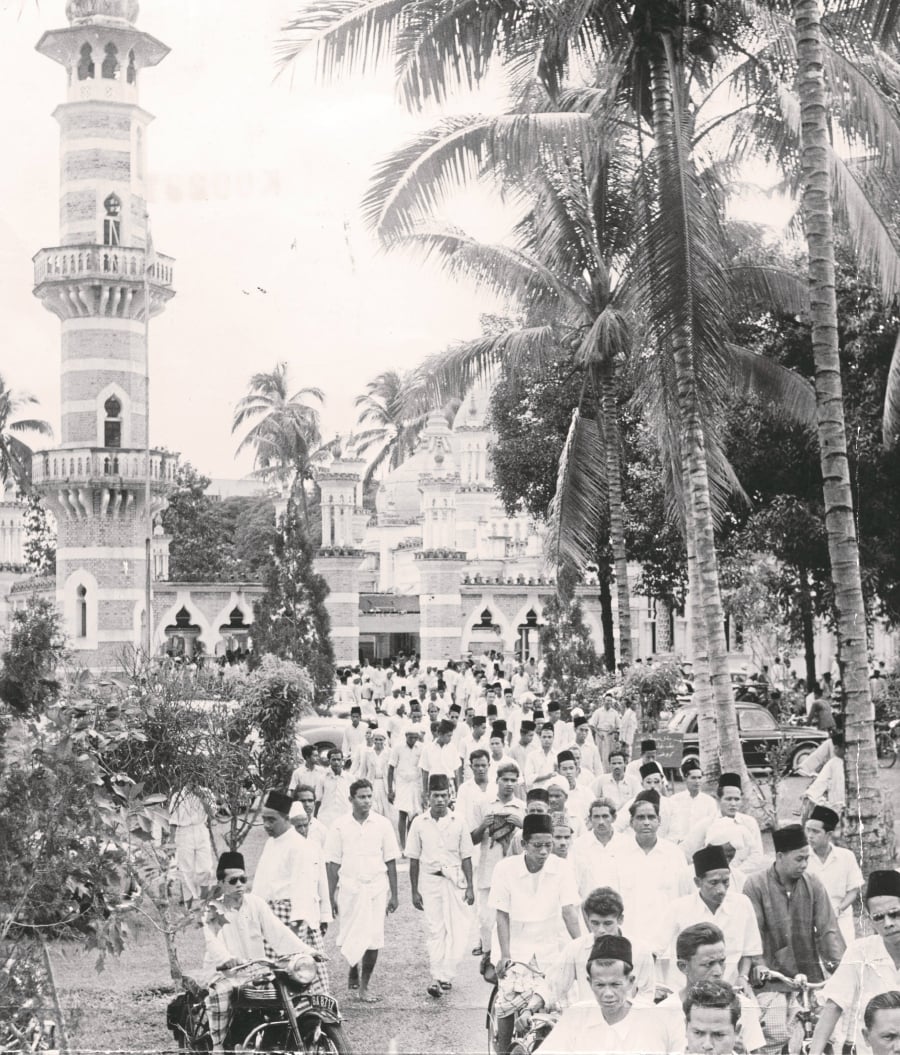THE timing could not have been more opportune. Malaysian economic growth forecasts for 2017 have been revised upwards by a number of impressive institutions, including the International Monetary Fund (IMF), World Bank, the Big Three international rating agencies and global financial majors, such as Nomura and Morgan Stanley.
These range from a gross domestic product growth forecast of 4.3 per cent earlier this year to between 4.9 and 5.6 per cent this week with a stable outlook for the economy going forward.
What a fillip and vindication of the economic policies of Prime Minister Datuk Seri Najib Razak and his government at the advent of Malaysia’s 60th Merdeka (independence) celebration from British colonial rule on Aug 31.
IMF, in a recent report, commended the resilience of the Malaysian economy, which “reflects sound macro-economic policy responses in the face of significant headwinds and risks. While economic growth is expected to continue in 2017, weaker-than-expected growth in key advanced and emerging economies or a global retreat from cross-border integration could weigh on the domestic economy”. Malaysia, it stressed, is among the fastest growing economies among peers.
In reality, Najib, the sixth premier since independence, is presiding over a continuum, which started with the then Malayan Union then Federation’s first chief minister and then prime minister, Tunku Abdul Rahman, and followed by the pragmatic Tun Abdul Razak Hussein (Najib’s father), and his successors Tun Hussein Onn, Tun Dr Mahathir Mohamad, the country’s longest-serving premier, and Tun Abdullah Ahmad Badawi.
Given the turmoil of the country’s pre- and immediate post-independence economy, which was marked by the ravages of World War 2, the Communist insurgency, the unceremonious and cowardly retreat from Empire by a near-bankrupt Britain, which still dominated key Malaysian industries — rubber and tin, and thus, the ownership of large tracts of land, it is a near miracle that in the space of six decades, Malaysia has been transformed into a vibrant, modern tech-savvy economy with ambitious development goals, holding its own in the Asean region and leading the world in such areas as socially responsible investment, the US$2 trillion (RM8.58 trillion) halal business, and the global Islamic finance industry, whose global assets under management are estimated at US$2.3 trillion, and whose Malaysian asset growth in three decades totalled just under RM750 billion at end of last year — some 30 per cent of the total banking sector, with the aim of increasing this to 50 per cent by 2030.
It would be a travesty to suggest that post-independence Malaysian society and economy was all hunky-dory, for, despite the achievement of Merdeka, thanks to the British policy of “divide-and-rule”, the lot of the ordinary Malays (Bumiputeras) was indeed dire with poverty, especially among the rural poor endemic and Malay ownership of capital in the economy a mere 2.4 per cent per capita per population as recent as 1970. Political events further conspired to fuel communal tensions and riots, especially between Malay and Chinese communities in 1969.
Enter Tun Razak, prime minister in 1969 in the aftermath of the tension, and who, with perspicacity introduced in 1971 a much-needed affirmative action programme, Dasar Ekonomi Baru, the New Economic Policy (NEP), which was a watershed in Malaysian economic policy history. The NEP underscored the importance of achieving socio-economic goals, primarily in uplifting the ethnic Malay population alongside pursuing economic growth objectives as a way of creating harmony and unity in a nation with many ethnic and religious groups. The NEP was initially a 20-year programme, but in 1991, it was effectively continued under the National Development Policy.
Today, the Bumiputera share of capital ownership is between 29 and 35 per cent per capita, and it would be a brave leader of Umno and the Barisan Nasional coalition to abolish or substantively tinker with it. As Malaysian society and the economy flourishes, both qualitatively and quantitatively, the next generation Malaysian premier may yet be tempted, albeit many economies which suffered the woes of years of colonialism and racism as in apartheid South Africa have found it nigh impossible, to extricate itself from affirmative action policies, given the huge remedial challenge.
Post-independence Malaysian economy is marked by three policy visions — the NEP; Wawasan (Vision) 2020, introduced by the Dr Mahathir government in 1991, whose core aim was for Malaysia to achieve a self-sufficient industrialised nation status by 2020; and the 30-year flagship national development initiative of premier Najib, Transformasi Nasional 2050 (TN50), which spans the period 2020-2050.
The TN50 policy document will be published in 2020, but consultations on the economic, social, cultural and environmental targets that Malaysia aims to achieve by 2050, thus transforming it into a higher-income, productivity driven and knowledge-based economy, have begun.
All three policy visions have also been faced with specific challenges — the NEP with the challenge of social re-engineering of Malaysian society and uplifting the majority out of poverty; Wawasan 2020 had to cope with the vagaries of the Asian Financial Crisis in 1998, which Malaysia resolved without going cap-in-hand to the IMF for standby loans, and a policy, which Dr Mahathir maintains, the West failed to acknowledge and emulate; and the Najib government with its New Economic Policy thrust and TN50 vision has had to cope with the impact of the 2008 global financial crisis, which affected Malaysia like any other economy, but which, as the IMF report suggests, has been navigated commendably by the Najib government.
Renewal and reinvention have sustained the vitality of the Malaysian economy since independence in 1957, shifting from an agri-based to import-substitution and export-oriented industrialisation, then to private sector-led diversification and to a more knowledge-based economy embracing technology. But, the challenges have also been difficult, especially with the introduction of the Goods and Services Tax to diversify the revenue base of the government to reduce the budget deficit, especially in an era of low commodity prices.
It would be a brave pundit who dares to predict the course of the Malaysian economy over the next 60 years. Suffice to say that challenges, given the right creativity and innovation, also present opportunities.
The writer is an independent
London-based economist and writer






